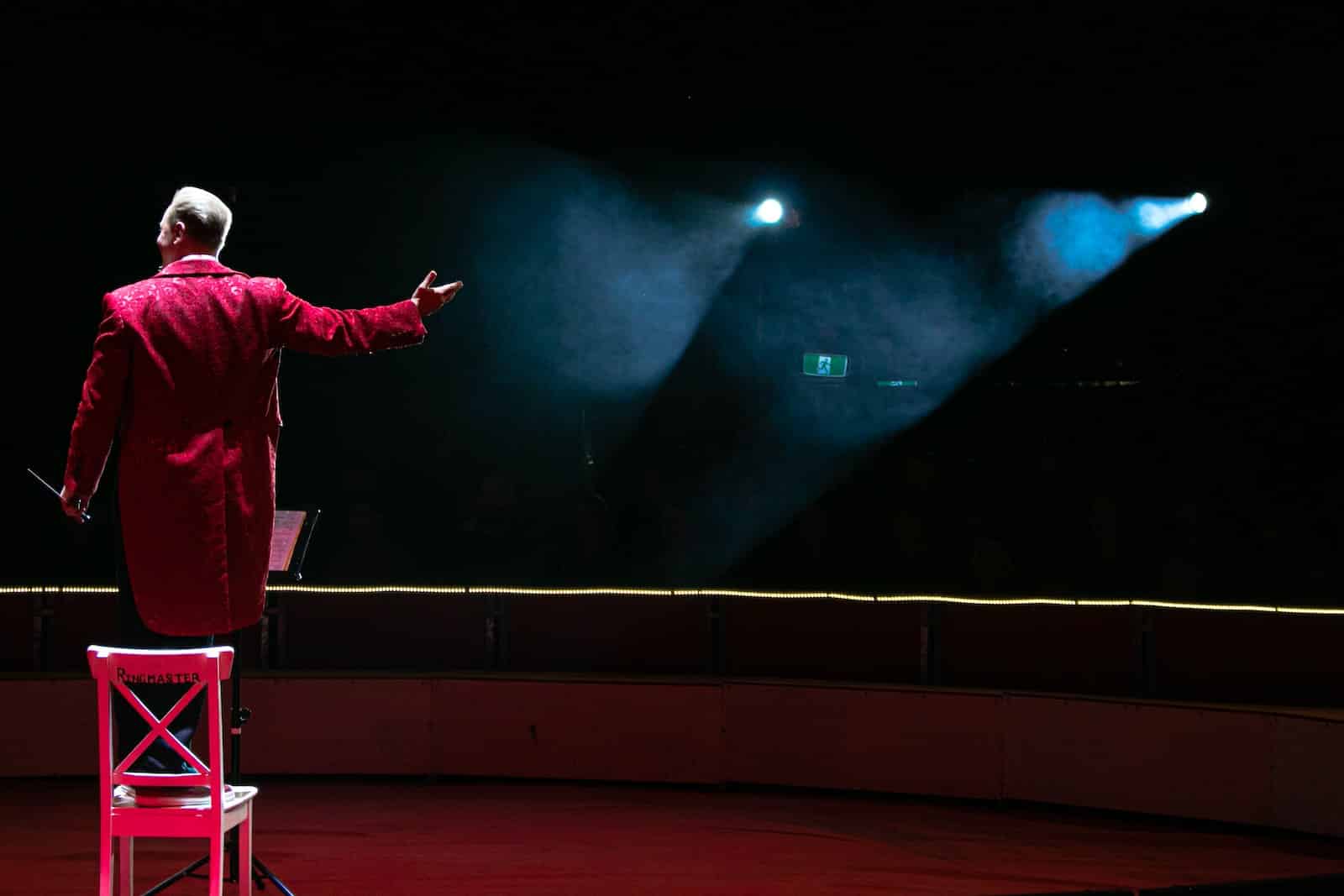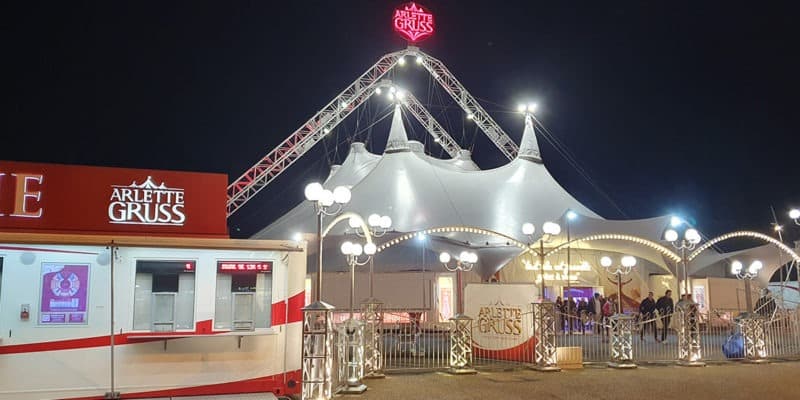Last Friday, the Arlette Gruss circus presented its first performance in Arras, in front of an enthusiastic audience.
The atmosphere was electric, with breathtaking acrobatics, incredible juggling acts and hilarious clowns. Cirque Arlette Gruss is installed (see our photo) on the Val de Scarpe esplanade, at the north entrance (where the spring funfair is also located), until Wednesday March 1. Ten performances are scheduled, including a dinner show.
Some thirty artists of fourteen nationalities are present, a third of whom are of Ukrainian origin. The artists are talented, passionate professionals who work hard to put on an unforgettable show at every performance.
Here’s a look at what circuses usually offer their audiences.
The World of Cirque Arlette Gruss
The circus is a fascinating universe, where magic and wonder combine to create a unique experience. Cirque Arlette Gruss continues this tradition with extraordinary acts and breathtaking staging. Animals play an important role in the circus world, and Cirque Arlette Gruss is no exception. The circus has a wide variety of animals, including horses, dogs, lions and tigers, which are carefully trained to deliver spectacular performances. Performers work closely with the animals to create acts that showcase their beauty and grace.
History of Cirque Arlette Gruss
The history of Cirque Arlette Gruss dates back to the late 19th century, when traveling circus families settled in France. The founder of Cirque Arlette Gruss, Arlette Gruss, was born into a family of circus performers and began working as a trapeze artist at the age of 12. In 1985, Arlette Gruss founded her own circus, which quickly became one of the most popular in France. The circus gained international renown thanks to its exceptional performances and its commitment to animal protection. Cirque Arlette Gruss is a symbol of passion, creativity and commitment to excellence. The circus artists work tirelessly to deliver unforgettable shows, using the latest technologies and most advanced techniques to create astonishing performances.

The circus always impresses young and old
What animals are found in circuses ?
In France, the use of wild animals in circuses has become increasingly controversial in recent years. Although there is no exhaustive list of animals that can be found in circuses in France, the most commonly used animals are elephants, lions, tigers, bears and horses. However, in 2018, France banned the use of wild animals in traveling circuses; Thus, the text stipulates a ban on the use of all wild animals in traveling circuses in France for a period of seven years from 2020. In addition, circuses are not allowed to purchase new wild animals, and will not be allowed to reproduce for a period of two years.
If a circus decides to settle down, it must comply with the standards set for zoos. This decision was taken in response to growing concerns about animal welfare and the living conditions in which animals are kept and trained. Since then, several cities and regions have also taken steps to ban circuses with wild animals on their territory. However, it should be noted that French law still permits the use of domestic animals such as dogs and cats in circus shows. Farm animals such as horses, goats and chickens are also authorized in certain cases.
Les montreurs d’ours: The origins of animal shows
Bear shows were a popular attraction in Northern France at one time, especially in the 19th century. These itinerant artists traveled from town to town with their trained bears, performing shows to entertain the crowds. They often came from bear-showing families, passing on their skills from generation to generation. Bears were often trained to dance, perform tricks, play music or even paint. Performances were usually held in public squares, at fairs and markets. However, these practices were progressively banned in the region from the end of the 19th century, due to the mistreatment of the bears, who were trained in a cruel manner and subjected to harsh living conditions.
A short history of live entertainment in northern France
The history of live performances in Arras and northern France dates back to medieval times. Indeed, as early as the 11th century, the region’s cathedrals and churches organized performances of mysteries, which were religious plays telling biblical stories designed to edify the faithful. These mysteries were often performed by both clergy and laity, and attracted large audiences. In the 13th century, troupes of jugglers and minstrels, who were itinerant artists, began to perform in the region. They were jugglers, acrobats, musicians and storytellers who entertained crowds with their varied talents. In the 14th century, the performances of the Enfants sans Souci troupe, who were professional comedians, were very popular in the region. They performed farces and comic plays (see Adam de la Halle) in public squares and at fairs. In the 16th century, Italian theater began to spread in northern France, and many traveling companies performed in the region. Particularly popular were commedia dell’arte-type shows, which were improvised comic plays. In the 17th century, permanent theaters began to spring up in the region’s towns, and classical French plays were increasingly performed. In those days, theatres were often reserved for the nobility and high society.
The first live performances in Arras and northern France have a long history dating back to the Middle Ages, and have evolved over the centuries to become one of the region’s cultural treasures.
R.C.
